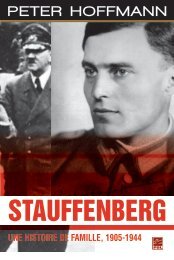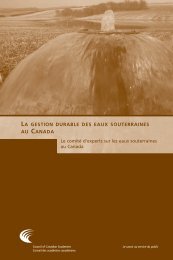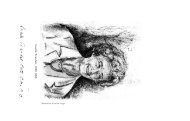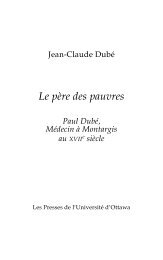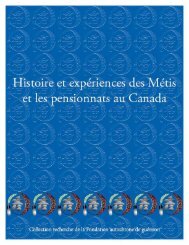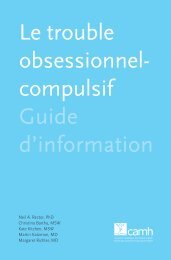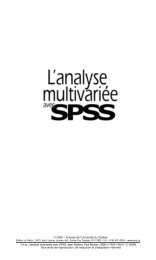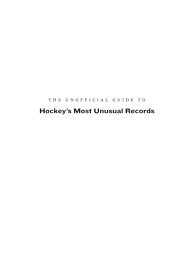Ancient Coins of the Graeco-Roman World
Ancient Coins of the Graeco-Roman World
Ancient Coins of the Graeco-Roman World
You also want an ePaper? Increase the reach of your titles
YUMPU automatically turns print PDFs into web optimized ePapers that Google loves.
<strong>Ancient</strong> <strong>Coins</strong> <strong>of</strong> <strong>the</strong><br />
<strong>Graeco</strong>-<strong>Roman</strong> <strong>World</strong><br />
The Nickle Numismatic Papers<br />
Edited by<br />
Waldemar Heckel and Richard Sullivan<br />
Through <strong>the</strong> ages, coins have been more than a<br />
common standard or a means <strong>of</strong> exchange between<br />
peoples for goods and services. The development <strong>of</strong><br />
coinage gave men freedom to move beyond <strong>the</strong>ir<br />
communities, served as a propaganda tool for advancing<br />
armies and visually showed people <strong>the</strong><br />
source <strong>of</strong> politics which governed <strong>the</strong>ir lives. Today,<br />
<strong>the</strong>se same bits <strong>of</strong> metal, <strong>the</strong>se ancient video disks,<br />
transmit through time information that might o<strong>the</strong>rwise<br />
be lost to us.<br />
This volume comprises a selection <strong>of</strong> papers given<br />
at a conference held at <strong>the</strong> Nickle Museum <strong>of</strong> The<br />
University <strong>of</strong> Calgary, Alberta, by perhaps <strong>the</strong> most<br />
distinguished ga<strong>the</strong>ring <strong>of</strong> numismatists ever to assemble<br />
in North America. Topics include specific<br />
coins <strong>of</strong> <strong>the</strong> <strong>Graeco</strong>-<strong>Roman</strong> world as well as discussions<br />
on coinage and propaganda, art, architecture,<br />
and archaeology.<br />
Archaeologists, historians, coin collectors, students<br />
<strong>of</strong> <strong>the</strong> Classics, in fact, anyone who is interested in<br />
art and life as it existed in ancient times will be<br />
captivated by this collection.<br />
Waldemar Heckel is Associate Pr<strong>of</strong>essor <strong>of</strong> Classics<br />
at The University <strong>of</strong> Calgary, specializing in Macedonian<br />
History and Prosopography. He was also<br />
chairman <strong>of</strong> <strong>the</strong> Nickle Conference Organizing<br />
Committee.<br />
Richard Sullivan is Adjunct Pr<strong>of</strong>essor <strong>of</strong> History at<br />
Simon Fraser University in British Columbia. He is<br />
author <strong>of</strong> numerous articles on <strong>the</strong> Greek East in<br />
<strong>Roman</strong> times and has a book forthcoming on Eastern<br />
Royalty.
<strong>Ancient</strong> <strong>Coins</strong> <strong>of</strong> <strong>the</strong><br />
<strong>Graeco</strong>-<strong>Roman</strong> <strong>World</strong><br />
The Nickle Numismatic Papers
<strong>Ancient</strong> <strong>Coins</strong> <strong>of</strong> <strong>the</strong><br />
<strong>Graeco</strong>-<strong>Roman</strong> <strong>World</strong><br />
The Nickle Numismatic Papers<br />
Edited by<br />
Waldemar Heckel and Richard Sullivan<br />
Essays by<br />
C. M. Kraay Richard Sullivan<br />
M. B. Wallace Duncan Fishwick<br />
Nancy Moore B. Levy<br />
Stanley M. Burstein Richard Weigel<br />
Frank Holt Frances Van Keuren<br />
Otto Morkholm P. Visona<br />
Bluma Trell Alexander G. McKay<br />
Robert L. Hohlfelder<br />
Published by Wilfrid Laurier University Press<br />
for The Calgary Institute for <strong>the</strong> Humanities
Canadian Cataloguing in Publication Data<br />
Main entry under title:<br />
<strong>Ancient</strong> coins <strong>of</strong> <strong>the</strong> <strong>Graeco</strong>-<strong>Roman</strong> world<br />
Revised versions <strong>of</strong> papers presented at <strong>the</strong> Nickle<br />
Conference, held in <strong>the</strong> Nickle Arts Museum <strong>of</strong> <strong>the</strong><br />
University <strong>of</strong> Calgary, Oct. 19-23, 1981.<br />
Includes bibliographical references.<br />
ISBN 0-88920-130-7.<br />
1. <strong>Coins</strong>, Greek - Congresses. 2. <strong>Coins</strong>, <strong>Roman</strong> -<br />
Congresses. I. Burstein, Stanley Mayer. II. Heckel,<br />
Waldemar, 1949- III. Sullivan, Richard, 1936-<br />
IV. Calgary Institute for <strong>the</strong> Humanities. V. Nickle<br />
Conference (1981 : Nickle Arts Museum)<br />
CJ233.A5 1984 737.4938 C84-099646-2<br />
Copyright © 1984<br />
Wilfrid Laurier University Press<br />
Waterloo, Ontario, Canada<br />
N2L 3C5<br />
84 85 86 87 4 3 2 1<br />
No part <strong>of</strong> this book may be stored in a retrieval system, translated or<br />
reproduced in any form, by print, photoprint, micr<strong>of</strong>ilm, micr<strong>of</strong>iche, or any<br />
o<strong>the</strong>r means, without written permission from <strong>the</strong> publisher.
TABLE OF CONTENTS<br />
FOREWORD ix<br />
EDITORS' NOTE xi<br />
PROGRAMME OF CONFERENCE xiii<br />
ABBREVIATIONS xv<br />
PART I: CREEK COINAGE 1<br />
Greek Coinage and War 3<br />
C. M. Kraay, Ashmolean Museum, Oxford<br />
The "Reduced Euboio-Attic" Coin Weight Standard 19<br />
M. B. Wallace, University <strong>of</strong> Toronto<br />
PART II: ALEXANDER AND THE HELLENISTIC EAST 39<br />
The Silver Coinage <strong>of</strong> Alexander from Pella 41<br />
Nancy Moore, Princeton University<br />
Lysimachus <strong>the</strong> Gazophylax: A Modern Scholarly Myth? 57<br />
Stanley M. Burstein, California State University,<br />
Los Angeles<br />
The So-Called "Pedigree <strong>Coins</strong>" <strong>of</strong> <strong>the</strong> Bactrian Greeks 69<br />
Frank Holt, Concord, Virginia<br />
The Monetary System in <strong>the</strong> Seleucid Empire<br />
after 187 B.C. 93<br />
Otto Morkholm, National Museum, Copenhagen<br />
PART III: THE PHOENICIAN WORLD 115<br />
The <strong>Coins</strong> <strong>of</strong> <strong>the</strong> Phoenician <strong>World</strong>—East and West 117<br />
Bluma Trell, New York University<br />
PART IV: COINS AND PROPAGANDA 141<br />
Royal <strong>Coins</strong> and Rome 143<br />
Richard Sullivan, Simon Fraser University<br />
An "Altar" Coin in Heidelberg 159<br />
Duncan Fishwick, University <strong>of</strong> Alberta<br />
Nero's Liberation <strong>of</strong> Achaea: Some Numismatic<br />
Evidence from Patrae 165<br />
B. Levy, Princeton University
viii Nickle Numismatic Papers<br />
The "Commemorative" <strong>Coins</strong> <strong>of</strong> Antoninus<br />
Pius Re-Examined 187<br />
Richard Weigel, University <strong>of</strong> Western Kentucky<br />
PART V: COINS AND ARCHAEOLOGY 201<br />
A Coin Copy <strong>of</strong> Lysippus's Heracles at Tarentum 203<br />
Frances Van Keuren, University <strong>of</strong> Georgia<br />
Foreign Currency in Etruria circa 400-200 B.C.:<br />
Distribution Patterns 221<br />
P. Visona, University <strong>of</strong> Michigan<br />
Art and Architecture as Severan Coin Types 241<br />
Alexander G. McKay, McMaster University<br />
Caesarea Maritima in Late Antiquity: An Introduction<br />
to <strong>the</strong> Numismatic Evidence 261<br />
Robert L. Hohlfelder, University <strong>of</strong> Colorado<br />
PART VI: ABSTRACTS 287<br />
S. P. Bellier<br />
T. V. Buttrey<br />
Frederick M. Lauritsen<br />
William E. Metcalf<br />
G. M. Woloch<br />
PLATES AND FIGURES 299
FOREWORD<br />
Established in 1976, <strong>the</strong> Calgary Institute for <strong>the</strong> Humanities has<br />
as its aim <strong>the</strong> fostering <strong>of</strong> advanced study and research in all areas<br />
<strong>of</strong> <strong>the</strong> humanities. Apart from supporting work in <strong>the</strong> traditional<br />
"arts" disciplines such as philosophy, history, ancient and modern<br />
languages and literatures, it also promotes research into <strong>the</strong> philoso-<br />
phical and historical aspects <strong>of</strong> <strong>the</strong> sciences, social sciences, fine<br />
arts, and <strong>the</strong> various "pr<strong>of</strong>essional" disciplines.<br />
The Institute's main raison d'etre is to provide scholars, both<br />
established academics and post-doctoral fellows, with time to carry out<br />
<strong>the</strong>ir research. It also sponsors ga<strong>the</strong>rings <strong>of</strong> persons who share<br />
common academic and intellectual interests, with a view to promoting<br />
discussion and disseminating ideas.<br />
The Nickle Conference, held (appropriately) in <strong>the</strong> Nickle Arts<br />
Museum <strong>of</strong> <strong>the</strong> University <strong>of</strong> Calgary in October 1981, was such a<br />
ga<strong>the</strong>ring. Devoted to numismatics, a passionate avocation <strong>of</strong> <strong>the</strong><br />
Nickle family, to whose munificence <strong>the</strong> University <strong>of</strong> Calgary is much<br />
indebted, this conference brought toge<strong>the</strong>r a distinguished collection<br />
<strong>of</strong> numismatists from Canada, <strong>the</strong> United States, Great Britain, and<br />
Continental Europe, <strong>the</strong> most distinguished ga<strong>the</strong>ring <strong>of</strong> numismatists<br />
ever to assemble in Canada, and perhaps in North America. The<br />
Institute is very pleased to publish here revised versions <strong>of</strong> <strong>the</strong><br />
papers delivered on that occasion, and we are sure that this volume<br />
will be <strong>of</strong> interest to all scholars and students interested in <strong>the</strong> coins<br />
and history <strong>of</strong> <strong>the</strong> <strong>Ancient</strong> <strong>World</strong>.<br />
We wish to record here our gratitude to <strong>the</strong> Research Services<br />
Office and <strong>the</strong> Development Office <strong>of</strong> <strong>the</strong> University <strong>of</strong> Calgary, and<br />
to <strong>the</strong> Social Sciences and Humanities Research Council <strong>of</strong> Canada for<br />
<strong>the</strong> grants which made <strong>the</strong> conference possible, and also to <strong>the</strong> De-<br />
partment <strong>of</strong> Classics, <strong>the</strong> Nickle Arts Museum, <strong>the</strong> Faculties <strong>of</strong> Hu-<br />
manities and Continuing Education, University <strong>of</strong> Calgary, for <strong>the</strong>ir<br />
support. Thanks are due also, <strong>of</strong> course, to <strong>the</strong> editors <strong>of</strong> <strong>the</strong><br />
volume, Waldemar Heckel and Richard Sullivan, and also to John<br />
Humphrey who generously assisted with <strong>the</strong> final version <strong>of</strong> <strong>the</strong><br />
manuscript. As ever, we thank Gerry Dyer for her painstaking work<br />
in typing <strong>the</strong> final version, and indeed so many earlier versions, <strong>of</strong><br />
<strong>the</strong> volume.<br />
J. C. Yardley,<br />
Acting Director
EDITORS' NOTE<br />
This volume represents <strong>the</strong> culmination <strong>of</strong> <strong>the</strong> efforts that have<br />
gone into <strong>the</strong> organization and staging <strong>of</strong> <strong>the</strong> Nickle Conference since<br />
September 1979. Sponsored by <strong>the</strong> Calgary Institute for <strong>the</strong> Humani-<br />
ties, <strong>the</strong> Office <strong>of</strong> <strong>the</strong> Curator <strong>of</strong> Numismatics, and <strong>the</strong> Faculty <strong>of</strong><br />
Continuing Education <strong>of</strong> <strong>the</strong> University <strong>of</strong> Calgary, <strong>the</strong> conference<br />
was held October 19-23, 1981, at <strong>the</strong> Nickle Arts Museum. In addi-<br />
tion to providing a forum for <strong>the</strong> presentation <strong>of</strong> new ideas--many <strong>of</strong><br />
which are published here--<strong>the</strong> congress introduced to <strong>the</strong> scholarly<br />
community <strong>the</strong> significant numismatic collection that has been brought<br />
toge<strong>the</strong>r at <strong>the</strong> University. The organizers thought it fitting that <strong>the</strong><br />
conference should be named in honour <strong>of</strong> Samuel C. Nickle, an Alber-<br />
ta pioneer whose generous donation to <strong>the</strong> University resulted in <strong>the</strong><br />
establishment <strong>of</strong> <strong>the</strong> Nickle Arts Museum, and <strong>of</strong> his son. Carl, whose<br />
gift forms <strong>the</strong> nucleus <strong>of</strong> that museum's coin collection.<br />
The present selection includes most papers given at <strong>the</strong> October<br />
meeting, though in slightly revised forms. Aside from conventions<br />
required by <strong>the</strong> Press, no effort has been made to harmonize <strong>the</strong>se<br />
papers stylistically. As to abbreviations <strong>of</strong> ancient titles and modern<br />
scholarly books or periodicals, we have in general followed <strong>the</strong> Oxford<br />
Classical Dictionary and L'annee philologique. If citations in a paper<br />
differed from <strong>the</strong>se but left no likelihood <strong>of</strong> confusion, we did not<br />
alter <strong>the</strong>m.<br />
Some speakers presented tentative conclusions or reports <strong>of</strong> work<br />
in progress, and <strong>the</strong>ir views are published only in abstract form;<br />
o<strong>the</strong>rs felt that publication <strong>of</strong> even a summary would be premature.<br />
Hence, we wish to acknowledge <strong>the</strong> contributions <strong>of</strong> those individuals<br />
whose papers do not appear in this collection: Drs. Vladimir and<br />
Elvira Clain-Stefanelli (Smithsonian Institution), Dr. A. A. Barrett<br />
(University <strong>of</strong> British Columbia), Mrs. A. H. Easson (Royal Ontario<br />
Museum), and especially Mr. C. Orton, Curator <strong>of</strong> Numismatics<br />
(Nickle Arts Museum). Pr<strong>of</strong>essor F. E. Shlosser presented a report<br />
in conjunction with that <strong>of</strong> Dr. G. M. Woloch; her subject is alluded<br />
to in Dr. Woloch's abstract. Regrettably, <strong>the</strong> format <strong>of</strong> <strong>the</strong> article by<br />
Pr<strong>of</strong>essor Francis Cairns (Liverpool) could not easily be accommodated<br />
by <strong>the</strong> IBM Displaywriter; <strong>the</strong> article has been published in ZPE 54<br />
(1984), 145-155. Pr<strong>of</strong>essor Duncan Fishwick's article also could not<br />
appear and will be published elsewhere. He has, however, con-<br />
tributed ano<strong>the</strong>r paper to <strong>the</strong> volume.
xii Nickle Numismatic Papers<br />
We wish also to thank those people who helped with <strong>the</strong> organi-<br />
zation <strong>of</strong> <strong>the</strong> Nickle Conference: Drs. M. B. Walbank and J. W.<br />
Humphrey <strong>of</strong> <strong>the</strong> Department <strong>of</strong> Classics, Dr. K. Loose and Mrs. M.<br />
Aldridge <strong>of</strong> Continuing Education, Mr. Tom Preston <strong>of</strong> <strong>the</strong> Nickle Arts<br />
Museum, and Dr. H. G. Coward, Director <strong>of</strong> <strong>the</strong> Calgary Institute for<br />
<strong>the</strong> Humanities. Thanks for help in various ways are due to Dr. W.<br />
E. Metcalf, Pr<strong>of</strong>essor W. C. Forrest, Dr. S. M. Burstein, and Pro-<br />
fessor M. F. McGregor; Mrs. Vi Lake helped with <strong>the</strong> typing <strong>of</strong> some<br />
papers, and Mr. Philip Amos assisted in reading <strong>the</strong> manuscript. The<br />
contributors will doubtless join us in giving special thanks to Mrs.<br />
Gerry Dyer, who not only did all <strong>the</strong> secretarial work before and<br />
after <strong>the</strong> conference but also prepared <strong>the</strong> camera-ready, final ver-<br />
sion <strong>of</strong> <strong>the</strong> entire volume. The editors particularly thank Pr<strong>of</strong>essor<br />
John W. Humphrey for help with <strong>the</strong> manuscript. We are also grate-<br />
ful to <strong>the</strong> University <strong>of</strong> Calgary for a subvention to aid in <strong>the</strong> pub-<br />
lication <strong>of</strong> <strong>the</strong>se papers.<br />
In conclusion, it is with great sadness that we record <strong>the</strong> loss <strong>of</strong><br />
Drs. Colin M. Kraay and Otto Mrirkholm, two <strong>of</strong> <strong>the</strong> most renowned<br />
scholars in <strong>the</strong> field <strong>of</strong> ancient numismatics. Few, if any, <strong>of</strong> those<br />
who contributed to this volume will say that <strong>the</strong>y have not benefited<br />
from his written work, from his helpful criticism, from simply having<br />
known him.<br />
Waldemar Heckel<br />
Richard D. Sullivan
PROGRAMME OF THE NICKLE CONFERENCE 1981<br />
October 19: C. M. Kraay, "Greek Coinage and War"<br />
October 20: T. V. Buttrey, "Seldom What They Seem—The Case<br />
<strong>of</strong> <strong>the</strong> Attic Tetradrachm"<br />
F. Cairns, "Chremata Dokima"<br />
M. B. Wallace, "Changes in Coinage Standards on<br />
Euboia"<br />
E. Clain-Stefanelli, "Fractional Silver Coinage <strong>of</strong> Sicily<br />
during <strong>the</strong> Fifth and Fourth Centuries B.C."<br />
Bluma Trell, "The <strong>Coins</strong> <strong>of</strong> <strong>the</strong> Phoenician <strong>World</strong>--East<br />
and West"<br />
P. Visona, "Foreign Currency in Etruria circa 400-200<br />
B.C.: Distribution Patterns"<br />
D. Fishwick, "The Federal Altar <strong>of</strong> <strong>the</strong> Three Cauls:<br />
The Evidence <strong>of</strong> <strong>the</strong> <strong>Coins</strong>"<br />
C. Orton, "The <strong>Coins</strong> <strong>of</strong> Massalia"<br />
A. C. McKay, "Severan Architecture and Art as Coin<br />
Types"<br />
October 21: 0. Morkholm, "The Monetary System in <strong>the</strong> Seleucid<br />
Empire after 187 B.C."<br />
N. Moore, "Coinage <strong>of</strong> Alexander <strong>the</strong> Great from <strong>the</strong><br />
Mint <strong>of</strong> Pella"<br />
S. M. Burstein, "Lysimachus <strong>the</strong> Gazophylax: A<br />
Modern Scholarly Myth"<br />
F. L. Holt, "The So-called "Pedigree <strong>Coins</strong>' <strong>of</strong> <strong>the</strong><br />
Bactrian Creeks"<br />
October 22: W. E. Metcalf, "From Creek to Latin Currency in<br />
Third-Century Egypt"<br />
R. D. Sullivan, "Royal <strong>Coins</strong> and Rome"<br />
B. E. Levy, "Nero's Liberation <strong>of</strong> Achaea: <strong>the</strong> Numismatic<br />
Evidence"<br />
R. H. Hohlfelder, "Caesarea Maritima in Late Antiquity:<br />
The Numismatic Evidence"<br />
S. Bellier, "Metallurgical Investigations on <strong>Ancient</strong><br />
<strong>Coins</strong>"<br />
F. M. Lauritsen, "A Late <strong>Roman</strong> Coin Hoard from<br />
Aphrodisias, Turkey"
xiv Nickle Numismatic Papers<br />
G. M. Woloch and F. E. Shlosser, "On Cataloguing a<br />
Medium-Sized University Collection"<br />
Frances Van Keuren, "A Coin Copy <strong>of</strong> Lysippus's<br />
Heracles at Tarentum"<br />
A. H. Easson, "An Introduction to <strong>Ancient</strong> Coinage<br />
through <strong>the</strong> Collections <strong>of</strong> <strong>the</strong> ROM"<br />
October 23: V. Clain-Stefanelli, "Master Counterfeiters <strong>of</strong> <strong>Ancient</strong><br />
<strong>Coins</strong>"<br />
C. M. Kraay, "A Sixteenth-Century Collector <strong>of</strong> <strong>Roman</strong><br />
<strong>Coins</strong>"<br />
Read by Title: R. D. Weigel, "The Commemorative <strong>Coins</strong> <strong>of</strong> Antoninus<br />
Pius Re-examined"
ABBREVIATIONS<br />
AIIN = Annali dell' Istituto Italiano di Numismatica<br />
AJN = American Journal <strong>of</strong> Numismatics<br />
ANRW = Aufstieg und Niedergang der romischen Welt<br />
ANS = American Numismatic Society<br />
BMC = Catalogue <strong>of</strong> Creek <strong>Coins</strong> <strong>of</strong> .... in <strong>the</strong> British<br />
Museum<br />
BMCRE = E. Mattingly and R. A. G. Carson, <strong>Coins</strong> <strong>of</strong> <strong>the</strong><br />
<strong>Roman</strong> Empire in <strong>the</strong> British Museum (London,<br />
1923ff.)<br />
CAH = Cambridge <strong>Ancient</strong> History<br />
CRR = H. Crueber, <strong>Coins</strong> <strong>of</strong> <strong>the</strong> <strong>Roman</strong> Republic in <strong>the</strong><br />
British Museum (London, 1910)<br />
EPRO = Etudes preliminaires aux religions orientales dans<br />
I'Empire Romain<br />
FGrH = Die Fragmente der griechischen Historiker<br />
Cnecchi = E. Cnecchi, I medaglioni romani, l-lll (Milan, 1912).<br />
Head HN 2 = B. V. Head, Historia Numorum, ed. 2 (Oxford,<br />
1911)<br />
|C_ = Inscriptiones Craecae<br />
ICBR = C. Mihailov, Inscriptiones Graecae in Bulgaria<br />
Repertae, I-IV (S<strong>of</strong>ia, 1956-66; I 2 1970)<br />
IGCH = M. Thompson, 0. Mrirkholm, C. Kraay, Inventory <strong>of</strong><br />
Creek Coin Hoards (New York, 1973)<br />
IGLSyr = Inscriptiones grecques et latines de la Syrie (L.<br />
Jalabert and R. Mouterde, Paris, 1929 - )<br />
IGRR = Inscriptiones Craecae ad Res <strong>Roman</strong>as Pertinentes,<br />
1, 3, a (R. Cagnat et al., Paris, 1906-1927)<br />
IMiletus = A. Rehm, Die Inschriften, Mi let, 3 (Berlin, 1914)<br />
IPriene = F. Hiller von Gaertringen, Inschriften von Priene<br />
(Berlin, 1906)<br />
JNFA = Journal <strong>of</strong> Numismatic Fine Arts<br />
JNG = Jahrbuch fur Numismatik und Geldgeschichte<br />
JNSI = Journal <strong>of</strong> <strong>the</strong> Numismatic Society <strong>of</strong> India<br />
JRAS = Journal <strong>of</strong> <strong>the</strong> Royal Asiatic Society
XVI Nickle Numismatic Papers<br />
Magie, RRAM = D. Magie, <strong>Roman</strong> Rule in Asia Minor, 1-2 (Princeton,<br />
1950)<br />
MUB = Melanges de I'Universite Saint Joseph (Beyrouth)<br />
MAC = Numismatic e Antichita classiche. Quaderni Ticinesi<br />
NNA = Nordisk Numismatic Xrsskrift (Scandinavian Numis-<br />
matic Journal<br />
NNM = Numismatic Notes and Monographs, American Numis-<br />
matic Society<br />
NS = Numismatic Studies<br />
OGIS = Orientis Craecae Inscriptiones Selectae (Leipzig,<br />
1903-1905; ed. E. Dittenberger)<br />
PEQ = Palestine Exploration Quarterly<br />
PC = Migne, Patrologiae Cursus, series Graeca<br />
PIR 2 = E. Groag, A. Stein, et al., Prosopographia Imperil<br />
<strong>Roman</strong>i, ed. 2 (Berlin, 1933 - )<br />
Recueil 2 = W. Waddington, E. Babelon, Th. Reinach, Recueil<br />
general des monnaies grecques (ed. 2, Paris, 1925)<br />
RIC = E. Mattingly, E. A. Sydenham, et al., <strong>Roman</strong> Imper-<br />
ial Coinage (London, 1923ff.)<br />
RIN = Rivista Italiana di Numismatica e Scienze affini<br />
RRC = M. Crawford, <strong>Roman</strong> Republican Coinage (Cambridge,<br />
1974)<br />
RRCH = M. Crawford, <strong>Roman</strong> Republican Coin Hoards (Lon-<br />
don, 1969; Royal Numismatic Society, Special Publi-<br />
cation no. 4)<br />
SIG 3 = Sylloge Inscriptionum Graecarum, ed. 3 (Leipzig,<br />
1915-1923)<br />
SNG = Sylloge Nummorum <strong>Graeco</strong>rum<br />
SNR = Schweizerische Numismatische Rundschau / Revue<br />
Suisse de Numismatique<br />
StudSem = Studi Semitic!<br />
Sydenham = E. A. Sydenham et al.. Coinage <strong>of</strong> <strong>the</strong> <strong>Roman</strong> Re-<br />
public (London, 1952)<br />
Welles, RC = C. B. Welles, Royal Correspondence in <strong>the</strong> Hellen-<br />
istic Period, A Study in Greek Epigraphy (Rome,<br />
1966)<br />
WSM = E. T. Newell, The Coinage <strong>of</strong> <strong>the</strong> Western Seleucid<br />
Mints ( = Numismatic Studies, 4: New York, 1941)<br />
ZfN = Zeitschrift fur Numismatik (also ZNum)
PART I<br />
CREEK COINAGE
CREEK COINAGE AND WAR<br />
Everyone living today must know that both actual war and<br />
preparation against <strong>the</strong> eventuality <strong>of</strong> it are very expensive items<br />
indeed in a nation's budget. Yet, because <strong>of</strong> <strong>the</strong> economic structure<br />
<strong>of</strong> <strong>the</strong> modern world, <strong>the</strong> impact <strong>of</strong> military expenditure on coinage as<br />
such is not immediately apparent; strategic materials imported from<br />
abroad are not, in fact, paid for by exporting sackfuls <strong>of</strong> paper<br />
money or current coin. The reason for this is obvious enough: <strong>the</strong><br />
paper money and <strong>the</strong> coins have no intrinsic value, for as paper or<br />
metal <strong>the</strong>y are nearly worthless, and <strong>the</strong>y function only as tokens<br />
representing a nation's stock <strong>of</strong> real wealth consisting <strong>of</strong> bullion or<br />
natural resources or manufactured goods or services.<br />
In <strong>the</strong> ancient world things were much simpler, and <strong>the</strong> relation-<br />
ship <strong>of</strong> coinage to wealth much more immediate. Of course, coinage<br />
was not <strong>the</strong> only form <strong>of</strong> wealth: agricultural produce, metals, manu-<br />
factured goods were important <strong>the</strong>n, as <strong>the</strong>y are today. But coinage<br />
was <strong>the</strong>n normally struck in precious metal, so that <strong>the</strong> actual coins<br />
represented wealth and were not merely tokens standing for it. In<br />
such circumstances, coins need not be localized in circulation; gold<br />
and silver coins could be, and were, exported in sackfuls to pay<br />
directly for imports, as we see in <strong>the</strong> example <strong>of</strong> <strong>the</strong> numerous hoards<br />
<strong>of</strong> A<strong>the</strong>nian tetradrachms discovered in various parts <strong>of</strong> <strong>the</strong> Near and<br />
Middle East. The full pattern <strong>of</strong> this movement <strong>of</strong> coinage is not<br />
recoverable because, in areas in which a local coinage was <strong>the</strong> legal<br />
tender, <strong>the</strong> imported coinage was normally melted down on arrival to<br />
supply bullion for <strong>the</strong> local coinage. Occasionally, however, <strong>the</strong><br />
urgency to convert imported foreign coins into local currency appears<br />
to have been so great that <strong>the</strong> quicker, but less efficient, process <strong>of</strong><br />
overstriking was employed ra<strong>the</strong>r than <strong>the</strong> slower process <strong>of</strong> melting<br />
down, casting new flans, and restriking. Thus, in late fourth-<br />
century Crete, we can detect a flood <strong>of</strong> foreign coinage, particularly<br />
from Cyrenaica, which had entered <strong>the</strong> island in <strong>the</strong> pockets <strong>of</strong><br />
returning mercenaries and been restruck with local types.




